Care in Crisis
For residents and staff at a Whitefish nursing home that endured one of the deadliest outbreaks of COVID-19 in Montana, the costs and challenges of the pandemic have extended beyond the physical effects of disease
By Tristan Scott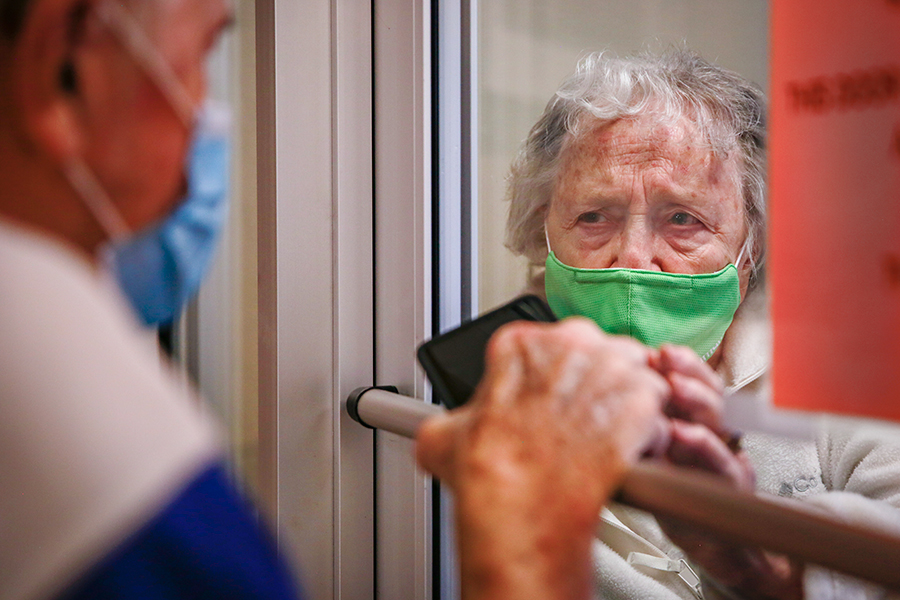
When April Crespin-Brown regained consciousness in a hospital bed in Kalispell, 100 miles from her home on the Blackfeet Indian Reservation, she thought she’d died and gone to meet her creator.
That was only partially true.
On Oct. 16, 2020, Crespin-Brown, 60, was flown from the emergency room in Browning to Logan Health after she collapsed due to complications from COVID-19, which triggered sepsis and caused her heart to stop. As medical staff performed life-saving, post-arrest resuscitation, Crespin-Brown was clinically dead, her vital functions that rely on blood circulation accumulating irreversible injury.
With every second that passed, the chances of Crespin-Brown’s survival diminished, and her belief in a convergence with the Almighty seemed more likely to be realized.
And then she woke up. She was in intense pain, but she was alive.
“My chest hurt so bad from the chest compressions,” she said earlier this month, seated in a wheelchair beside a broad glass-paned fireplace in the lobby at Whitefish Care and Rehabilitation Center, recalling the horror through tears. “The last thing that I remembered was I couldn’t breathe and I was hallucinating. I was scared, but I was so happy to be alive. I was so happy that God decided he wasn’t ready for me yet.”
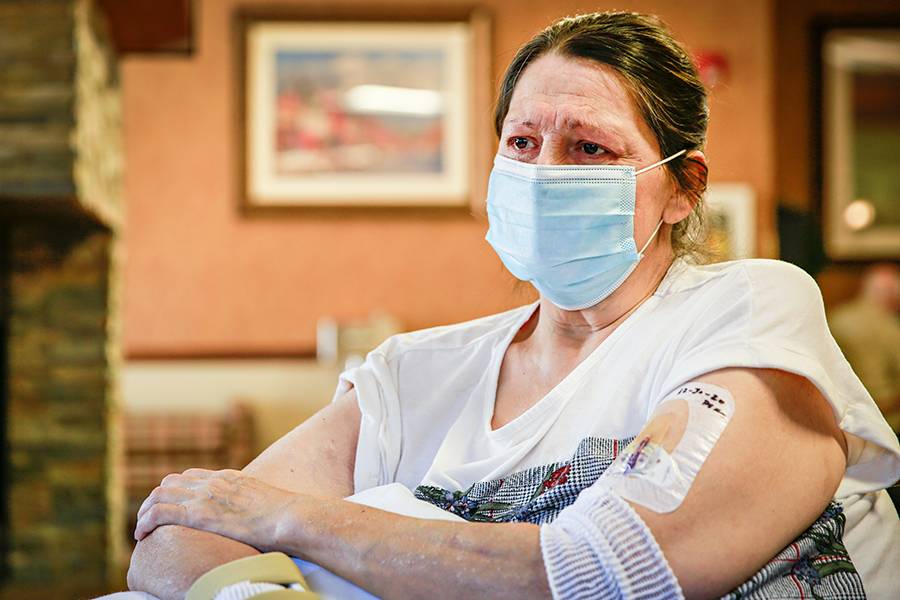
Today, Crespin-Brown is recovering at the Whitefish care facility, which she describes with emotional affection. She’s growing stronger through physical therapy, and is receiving treatment for a host of previously undiagnosed maladies, some of them related to her diabetes, all of them exacerbated by COVID-19.
“They got me to walk again. I walked 21 feet today and it felt like a mile, but I’m getting stronger,” she said. “I don’t like being away from home, away from my son and grandkids, but I will miss this place. They’ve been so good to me.”
Crespin-Brown isn’t alone in her assessment of the quality of care at Whitefish Care and Rehabilitation, but those terms of endearment have been eclipsed in recent months by much grimmer accounts following a deadly outbreak that ripped through the center this summer, killing 13 residents and infecting 52 residents and staff.
In Montana and across the nation, nursing home residents have been among the hardest hit by COVID-19, with outbreaks spreading rapidly through the congregant settings and disproportionately impacting vulnerable seniors and individuals with existing medical conditions. By the time Crespin-Brown arrived at the long-term care facility in October, the novel coronavirus had already taken its toll, while a federal report from the Centers for Medicare and Medicaid Services (CMS) describing “noncompliance” with COVID-19 infection protocol had been widely publicized. The facility was stamped with a deficiency rating of “Immediate Jeopardy,” which federal regulators reserve for the most severe cases.
Shortly after the New Year, the scene at Whitefish Care and Rehab radiated warmth as some residents wheeled up to the fireplace to relax, having received their first dose of vaccination days earlier. From an outsider’s perspective, it seemed an unlikely venue for the kind of loss of life that had occurred only months earlier.
The COVID-19 outbreak at Whitefish Care and Rehabilitation Center began Aug. 12 when an asymptomatic staff member tested positive, at which point the virus had already begun to spread, according to the facility’s executive director, Reid Crickmore. As the positive test results mounted, the staff sprang into action, moving residents to a makeshift COVID-19 unit, where they isolated behind floor-to-ceiling plastic curtains that one resident described as “something out of the movie ‘Alien.’”
“That’s when we became the first nursing home to have an outbreak in the state of Montana,” Crickmore said, noting that other widely reported COVID-19 outbreaks at long-term care facilities in the state provided assisted care, which differ from nursing homes. “We had a really solid staff in place, and we had infection protocols in place. Everyone was prepared for an outbreak. But you’re never really prepared for that many people at once. You can do all the mitigation and meet all the guidelines, but when you have 50 people test positive in two weeks during a pandemic, including staff who now can’t come to work, it’s like, ‘OK. Wow.’ It was a rough few months.”
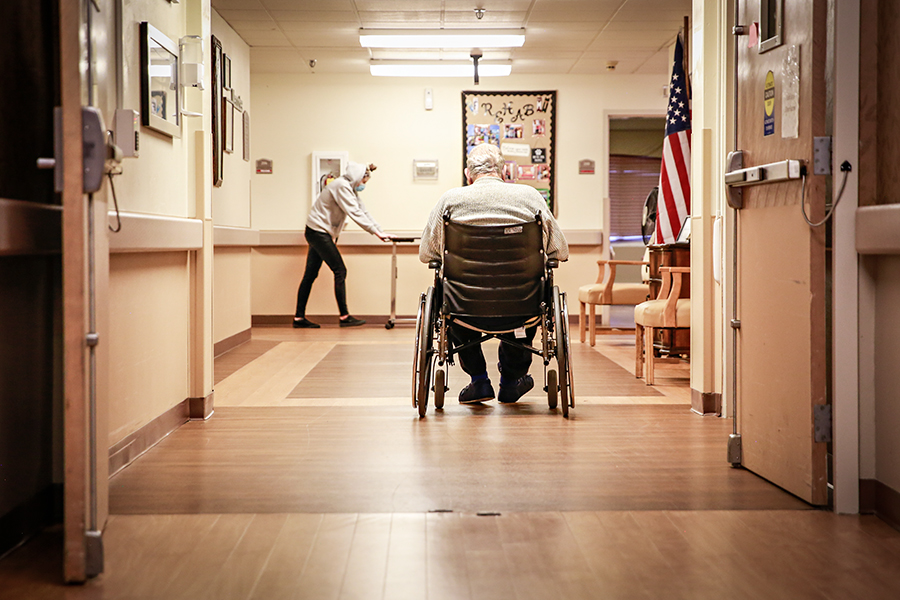
America’s nursing homes brim with stories like the one that unfolded at Whitefish Care and Rehabilitation Center, with CMS announcing in September that it had fined more than 3,400 facilities due to non-compliance with infection control requirements and failure to report COVID-19 data during the public health emergency’s initial stages.
Watchdog groups say the industry and the government could have done far more from the beginning by shoring up infection-control protocols and staffing, delivering stronger oversight of troubled homes and ensuring that coronavirus stimulus payments reached patients and caregivers rather than corporate owners.
As a result of the outbreak at Whitefish Care, Crickmore and the facility’s owners are now defendants in a lawsuit, with the legal proceedings expanding to include allegations of negligence and conspiracy, describing the center as just one entity in a multi-state network of facilities that prioritized profit over patients’ care, and revealing systemic failures within the industry. Since the lawsuit was initially filed in October, the list of plaintiffs has grown, too, and the case now includes six individuals, some of them deceased, on whose behalf family members are seeking damages.
In the Flathead Valley, the facility has been branded with a stigma, which has persisted even as Crickmore and his medical staff say they’ve made improvements and adjustments to infection control protocol that go above and beyond state and federal requirements. They also say media reports of the violations skewed heavily toward the government’s surveys of pre-pandemic conditions, just as the center was rebuilding after a succession of owners who staff acknowledged were problematic, resulting in chronic staffing shortages and low morale.
“At the time of the outbreak we’d made a lot of progress under the new administrators to turn things around,” said a Whitefish Care staff member who asked to remain anonymous. “We had a really committed, hard-working staff and the health and safety of the residents was their absolute top priority. And then COVID happened.”
When the first deaths at Whitefish Care were reported, public health officials were limited in what details they could release, instead putting the onus on the facility to address the outbreak. Although Crickmore issued several emailed statements, he said his focus was on the residents, not on resolving a public-relations crisis, and he acknowledges that his relative silence likely made him an easy figure to vilify amid the rising death toll.
“We were never reckless, and we never had anything to hide, but in the middle of our outbreak we were focused entirely on taking care of our residents, not on the bad PR,” Crickmore said. “But our staff were devastated. They didn’t want to wear their name badges into the grocery store, or even go out in public, they felt so ashamed.”
“It was like a scarlet letter,” said Heather Marshall, the infection control nurse at Whitefish Care who was in charge of the facility’s COVID-19 unit during the outbreak. “But we didn’t have time to think about that. It spread so fast. I’ve been in this profession for 22 years and it’s not like anything I have ever dealt with. None of the staff have.”
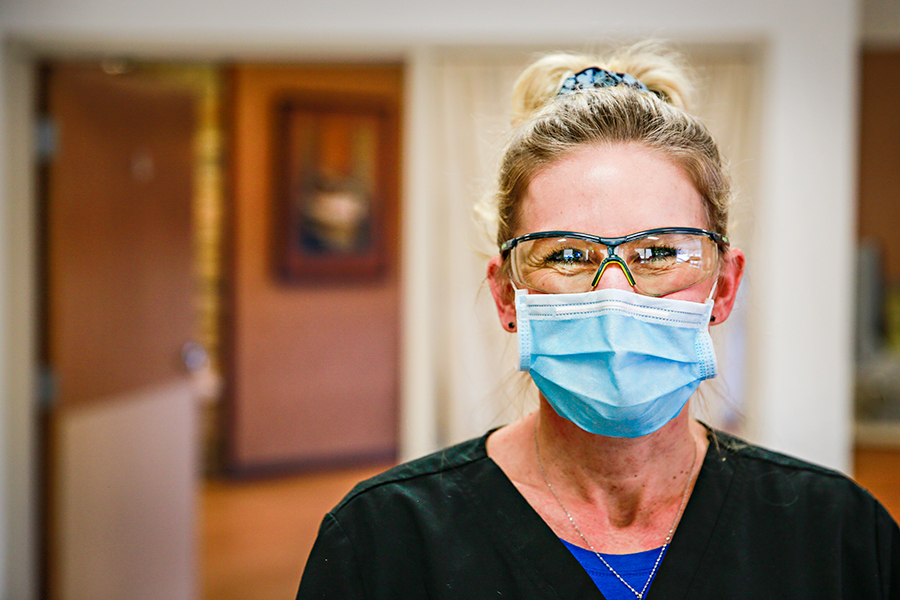
At the height of the outbreak, staff members who hadn’t tested positive for the virus opted to stay at the facility rather than go home and risk infection in the outside world. Meanwhile, delays in testing results meant working to curb the spread of infection inside the building with a wide margin of uncertainty.
“Anyone with symptoms we would take to the COVID unit and isolate, but as the COVID unit grew, so did its staffing needs,” Marshall said. “Once you worked the COVID unit you couldn’t work anywhere else, so we had nurses and nursing assistants working 14 days straight because they were needed.”
The physical strain of the long shifts was compounded by the impossible task of trying to stop the unstoppable, and by the emotional stress of losing residents to the disease, particularly as family members grieved for their dying spouses and ailing parents through glass barriers, unable to have direct contact.
“We lost 13 residents. And these people are like family to us,” Marshall said. “And then we had to stand by as their actual families watch their loved ones pass away from outside the building. It was a tragedy like nothing I have experienced, and I hope I never experience it again, but through it all we were doing the best we could do.”
Today, if you search the CMS website’s “Nursing Home Compare” database, which assigns each nursing home an overall rating — including links to recent health inspection reports, fire safety inspections, staffing, quality of resident care and penalties — Whitefish Care and Rehabilitation is marked with a red icon depicting an outstretched hand. According to the website, the icon is used to designate “nursing homes that have been cited for potential issues related to abuse.”
The facility is also ranked with one star out of a possible five.
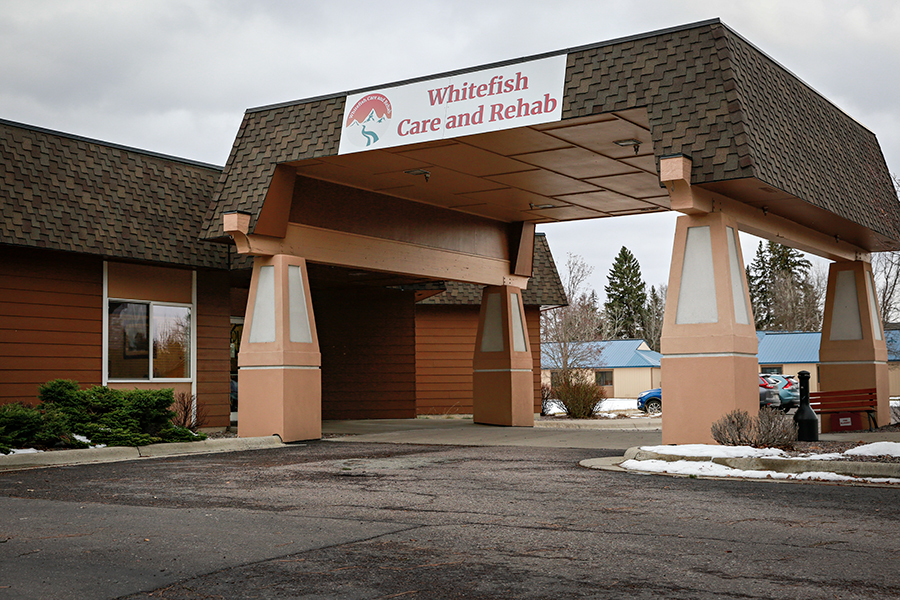
“According to CMS, we’re still a problem building,” Crickmore said. “Our goal is to be a five-star building. Right now, we are a one-star building. Change won’t happen overnight, but we’re on the right track.”
As of Jan. 5, every staff member and resident has been vaccinated, and no new COVID-19 cases have been detected since August, with rigorous testing protocol made easier by improved testing availability.
“Our infection-control protocols are so fine-tuned now. At this point our building is probably one of the safest in the valley,” Crickmore said. “But when we had our outbreak it was all so new, and it was taking nine to 10 days to get test results.”
Even as the virus slows its spread, the need for care is as pressing as ever, and the Whitefish facility continues to accept new admissions, while other residents have lived there for a year or longer.

Rock Rothenberger, 66, gets a far-away look in his eye when he recalls the pre-pandemic era of communal dining, B-I-N-G-O nights and the freedom to come and go as he pleased, often hopping on the Eagle Transit’s city-to-city commuter for an afternoon of shopping in Kalispell.
“I haven’t been able to leave this place since March 12,” he said on Jan. 6. “That’s 10 months and five days, and I have it good compared to some people. Think about being 92 years old and you can’t see your friends and family. There’s people who might die in here and they’ll never see their husband or wife again.”
Donna and Donald James have been married 72 years, the seeds of their enduring love and commitment having been planted as teenagers, dancing to a jukebox at the old Pronto Pups soda fountain in Kalispell.
“I thought he was the worst dancer I had ever danced with,” Donna recalled, laughing. “I called his dance the ‘James Jump’ and it was just awful. But we started dating and I liked him very much. We’ve been together ever since.”
Late last year, Donald fell in the middle of the night. Then he fell a second time, and Donna couldn’t get him back up.
“I had to call my children in the middle of the night,” she said. “I noticed his feet and legs were swollen, and I thought it was a heart problem so I called the ambulance. About a half-hour later we found out he had COVID. It was a shock to me because we’re 91 and 92 and we’ve been isolating all year. I don’t know where we got it, I only know that it’s probably everywhere.”
After three weeks in the hospital, Donald is recovering at Whitefish Care and Rehabilitation, where he’s working with a physical therapist to regain enough strength to walk again.
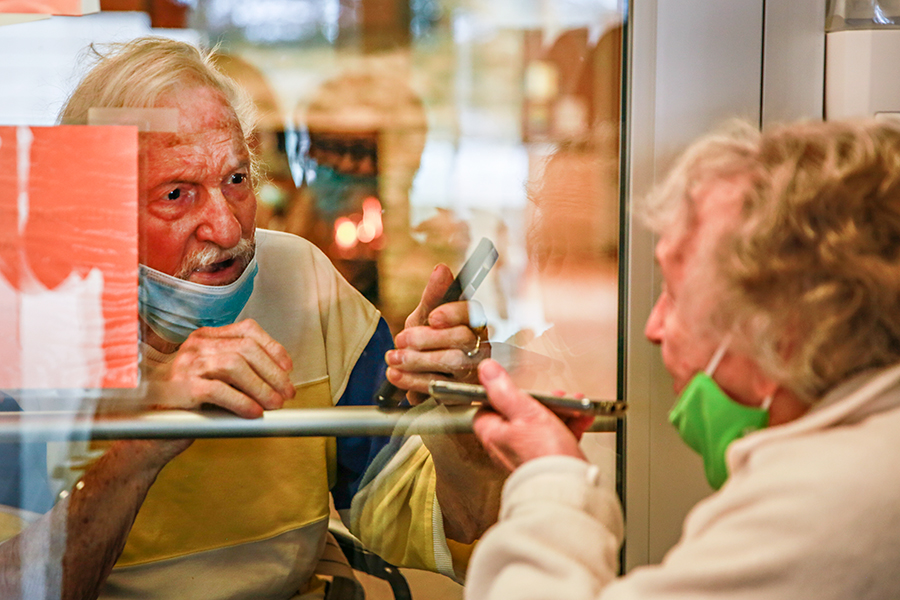
“I miss him so much,” Donna said. “I visit him every other day and see him through a window. It’s difficult. I know that he’d like to come home, and I would like to have him home. But there’s no way under the sun I can lift him if he falls again.”
“It has been very difficult not to be able to visit someone you love, and not be able to touch them and not to be able to kiss them,” she added. “I understand the COVID and this is the state’s way to try and stop it. But visiting through a window is the absolute pits.”
“I want my cribbage partner back,” she added. “I’m tired of playing solitaire.